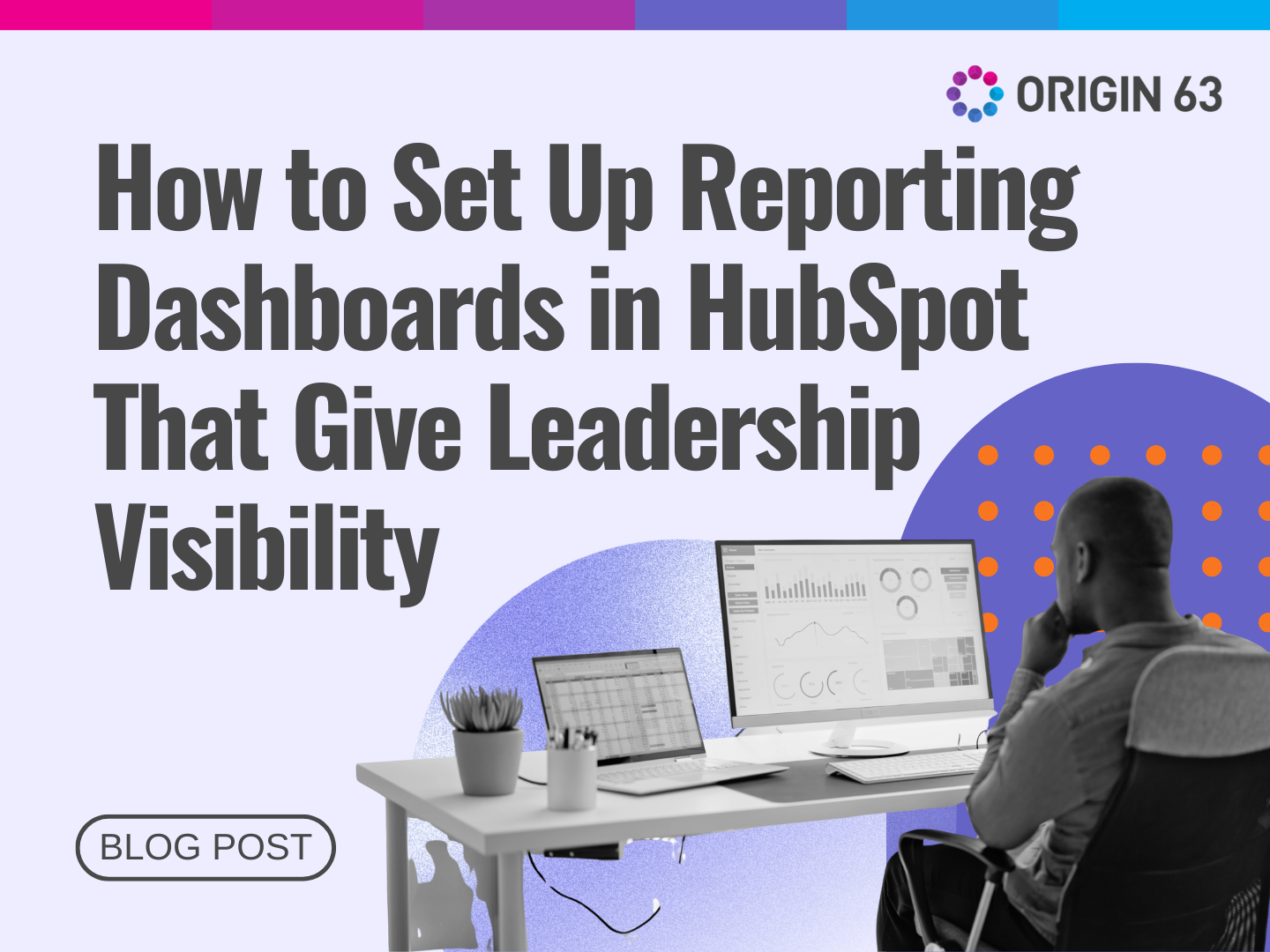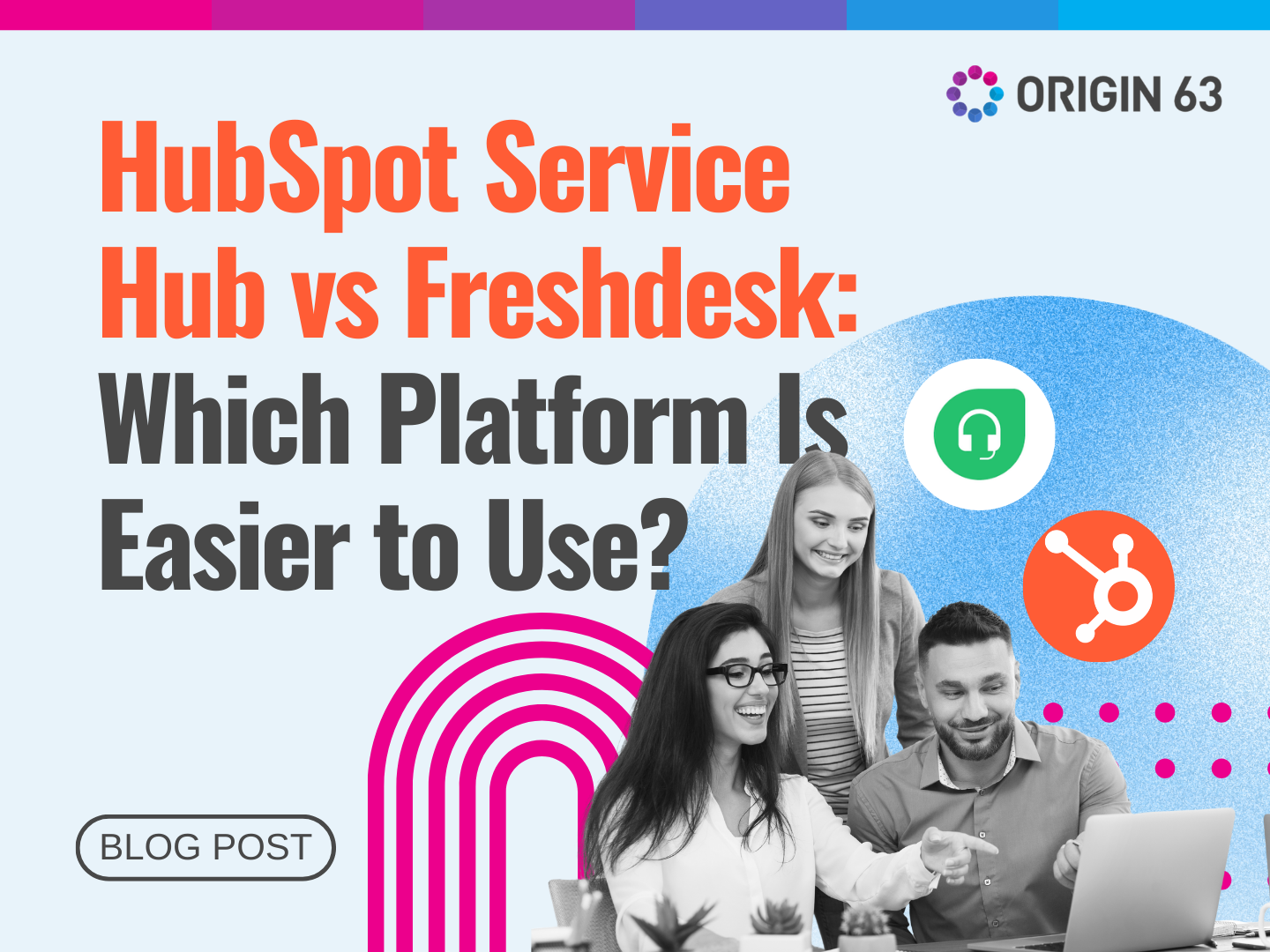Decisions, decisions. In business, you're constantly making them—and getting them right is the way to customer success. But how can you be sure you're making the best call? The answer lies in data.
Data-driven decision-making analyzes real-time customer behavior and trends to help you determine the smartest, most impactful moves. HubSpot’s Customer Success Workspace helps you here through comprehensive data and actionable insights.
Let’s learn about actionable insights, why they matter, and how HubSpot can help you use them to keep customers happy and loyal.
What Are Actionable Insights?

Imagine you’re managing a SaaS platform. You have tons of customer info—user activity logs, feedback, support tickets, and more. That’s your raw data. But just knowing this random info isn’t enough; you need to combine the pieces to form an explanation that makes sense.
In customer success, actionable insights are like that explanation. They take raw data and turn it into clear, practical steps you can use to improve your product and keep customers satisfied.
They're the "aha!" moments from looking at your data and understanding what it means for your customers and your business.
Here's what makes an insight "actionable":
- It tells you something specific. Instead of "customers seem unhappy," an actionable insight might be "customers who haven't logged in for 30 days are 50% more likely to cancel their subscription."
- It points to a clear action. Following our example, the action might be "reach out to customers who haven't logged in for 25 days with tips on how to use the product."
- It's timely. An insight into last year's trends might be interesting, but what's happening now is actionable.
- It's relevant to your goals. If you aim to reduce customer churn, insights about churn risk factors are highly actionable.
Why Do These Insights Matter So Much In Customer Success?
Well, think about it this way: your customers are the lifeblood of your business. Understanding their needs, struggles, and successes isn't just good customer service—it's good business sense.
Knowing what they need is a major focus for 66% of consumers when staying loyal to brands. Actionable insights help you spot problems before they become deal-breakers for your customers.
You can also identify opportunities to help your customers get more value from your product, make informed decisions about where to focus your efforts, and prove the value of your customer success initiatives.
Understanding the Big Picture
When you're managing customer relationships, it's easy to get lost in the day-to-day details. But to drive success, you need to be able to step back and see the forest for the trees. That's where HubSpot's Customer Success Workspace comes in handy.
Think of it as your customer success command center. It gives you a bird's-eye view of your customer base, helping you spot trends, identify risks, and seize opportunities. Here's what you'll see:
1. Portfolio Overview

This is your at-a-glance view of all your customers. You can quickly see important metrics for each company, such as their health score, annual revenue, and when you last interacted with them.
You can quickly identify which accounts need urgent attention. From this view, you can usually perform quick actions like sending an email or scheduling a meeting, saving you time from switching between different tools.
For example, imagine you're a customer success manager at a marketing automation company. Your portfolio overview might show that one of your high-value customers hasn't logged in for the past week, and their health score has dropped.
2. Health Scores
Health Scores are like a vital sign monitor for your customer relationships. They consider various factors to give you a numerical representation of each customer relationship's health (or at risk).
You decide what factors contribute to the health score based on what's most important for your business. Each factor is assigned a weight, allowing you to prioritize certain behaviors or metrics over others.
HubSpot automatically calculates and updates these scores based on the rules you set.
3. Custom Reports
You can add up to five custom reports showing the metrics that matter most to your business. These reports can show you the metrics that matter most to your business. Then, you can choose to present them as charts and graphs.
Think carefully about which metrics will give you the most actionable insights. It's not about having the most data but the right data. Your business needs might change over time, so don't be afraid to swap out reports as your focus shifts.
For instance, a customer success team at a project management software company might have reports showing user adoption rates, task completion trends, and integration usage.
How Does the Big Picture Overview Help in Making Strategic Decisions?

This big-picture view isn't just nice to look at—it's a powerful tool for making smart, strategic decisions. Here's how:
1. Resource Allocation
Let's say you notice that customers with low health scores also have low product usage rates. This insight might lead you to create a targeted onboarding program to boost engagement and improve retention.
2. Identifying Trends
If you see that customers in a particular industry are consistently achieving high health scores, you might decide to focus your sales and marketing efforts on acquiring more customers in that sector.
3. Proactive Risk Management
A sudden drop in health scores across multiple accounts could indicate a widespread issue—perhaps a recent product update isn't going over well. This insight allows you to address the problem quickly before it leads to churn.
4. Upsell Opportunities
High health scores and high usage of certain features might indicate customers are ready for an upgrade. You can use this information to time your upsell conversations perfectly. 91% of customers are likelier to shop with brands offering relevant deals and recommendations.
HubSpot's Analytics Tools
HubSpot's Customer Success Workspace is like a Swiss Army knife for managing customer relationships. It's packed with powerful tools that help you understand your customers better. Let's break down some of the most important ones:
1. Customer Health Score
The customer's Health Score is like a report card that combines different factors to give you a quick overview of your customer's health.
You choose what matters most for your business. This could be things like how often they use your product, how many support tickets they open, or how likely they are to recommend you to others.
HubSpot then crunches these numbers and gives each customer a score. A high score? Great! Your customer is healthy and happy. A low score? Time to step in and see how you can help.
For example, you might set up customer health scores so that daily logins add 5 points to the score, using a new feature adds 10 points, opening a support ticket subtracts 2 points, and giving you a high rating on a survey adds 15 points.
This way, you can quickly spot which customers need your attention before small issues become big problems.
2. Usage Metrics
This tool is like having x-ray vision into how your customers use your product. It shows how often customers log in, which features they use the most (and least), and how their usage changes over time.
Why is this important? If you notice a customer's usage dropping off, it might be a sign they're struggling or losing interest. On the flip side, if you see them using many advanced features, they might be ready for an upgrade!
3. Support Analytics

This tool helps you keep track of customer support interactions. It shows you how many support tickets are coming in, how long it takes to resolve issues, and what kinds of customer problems are most often.
You can spot common issues and fix them before they become widespread problems. For instance, if you notice a spike in tickets about a particular feature, it might be time to update your user guide or tweak it.
4. NPS and CSAT Surveys
Sometimes, the best way to know how your customers feel is to ask them directly. That's where NPS (Net Promoter Score) and CSAT (Customer Satisfaction) surveys come in.
NPS asks customers how likely they are to recommend your product to others. It's a great way to gauge overall loyalty. CSAT surveys, on the other hand, ask how satisfied customers are with a specific interaction or experience.
These surveys are like conversations with your customers. They help you understand what's working well and what needs improvement.
How to Analyze Customer Health with HubSpot

Let's walk through an example scenario of how a business might use health scores to its advantage.
You're a customer success manager at a software company, and you've just opened your HubSpot Customer Success Workspace.
As you scan your portfolio, you notice that TechStart Inc., a mid-sized tech company that's been your customer for a year, has experienced a significant drop in their health score—from 85 to 70 in the last month. This catches your attention, and you decide to investigate further.
Diving into the usage metrics, you observe that while overall usage remains steady, the adoption of a new feature you launched two months ago is surprisingly low. You check the support history and find tickets where users complained about using this new feature.
A glance at the communication log reveals that your team hasn't reached out proactively about this new feature since its initial launch. This combination of low adoption, support tickets, and lack of follow-up communication likely explains the drop in the health score.
Based on this analysis, you've identified an area of concern (low adoption of the new feature) and an opportunity for improvement (proactive education about the feature).
You might decide to:
- Schedule a check-in call with the main point of contact at TechStart Inc.
- Prepare a personalized demo of the new feature for their team.
- Set up a series of tips and tricks emails about the new feature for all TechStart Inc. users.
You're not just reacting to a dropping health score—you're proactively addressing the root cause and providing added value to your customer.
Turning Insights into Action
Making insights actionable means asking yourself, "So what?" and "Now what?" For every insight you uncover, think about what it means for your customers and what you can do about it.
Here are some examples:
Improving Engagement
Insight: Users from Company X haven't logged in for 20 days.
In this situation, you might set up an automated email campaign with quick tips and reminders about valuable features. These emails could highlight how other customers benefit from the platform's regular use.
Addressing Issues
Insight: There's been a spike in support tickets about a specific feature.
When you notice this trend, you could create a targeted help article or video tutorial about that feature. This resource could be sent to all users who have attempted to use the feature in the last month.
Capitalizing on Success
Insight: Customers who use Feature Y are 50% more likely to renew their subscription.
Armed with this information, you could launch a campaign to boost the adoption of Feature Y. This campaign might include in-app prompts that guide users through the feature when they log in.
You could also organize a webinar showcasing Feature Y's benefits, inviting current users and potential users to share their success stories and learn more.
Customization and Reporting
One size doesn't fit all in customer success, and HubSpot knows this. That's why they've made their reporting super flexible.
Here's how to make the most of it:
1. Customizing Dashboards
Create role-specific dashboards. For instance, a customer success manager might want a dashboard focusing on health scores and upcoming renewals, while a support lead might prioritize ticket metrics.
To set this up, use the drag-and-drop interface to arrange your most important metrics front and center.
Pro tip: Include a mix of lagging indicators (like churn rate) and leading indicators (like product usage trends) to get a balanced view of your customer success efforts.
2. Building Custom Reports

Sometimes, you need to track something specific that isn't covered by the standard reports. Use the custom report builder to create exactly what you need. For example, you could create a report showing the correlation between product usage and the likelihood of renewing.
Start by defining the specific metrics you want to track. Then, HubSpot's report builder can combine these metrics meaningfully. Don't be afraid to experiment—sometimes, unexpected data combinations can lead to valuable insights.
3. Setting Up Automated Reports
Don't want to log in every day to check your metrics? Set up automated email reports. You could have a weekly health score summary sent to your team every Monday morning or a daily report of accounts that need immediate attention.
Decide on the frequency and content of your reports. Then, use HubSpot's automation features to schedule them. This ensures that everyone on your team stays informed without pulling data manually each time.
4. Leveraging Shared Views
Aligning your teams can help you deliver seamless customer experiences. Unfortunately, only 42.5% of leaders say their customer success team is aligned with their sales team, while 4% say the teams are completely out of sync.
In HubSpot, you can create and save filtered views of your account portfolio, which can be shared with team members or kept private. It’s useful for focusing on specific customer base segments or collaborative work.
For example, you could create a shared view for "High-Value Accounts Due for Upgrade," allowing your team to focus on upsell opportunities for your most promising clients. Use the filtering options to define your criteria, save the view, and share it with the team.
5. Integrating Relevant Pipelines
If you use different pipelines for support tickets or deals, you can add them to your workspace for easy access. This integration provides a comprehensive view of all ongoing processes related to your accounts, ensuring nothing falls through the cracks.
For instance, adding the support ticket pipeline to your workspace could help you quickly spot an account with an open, high-priority support issue that needs your attention. This would allow you to intervene and demonstrate your commitment to the client's success.
Wrapping Up
Success isn't just about collecting information—it's about turning that information into action. HubSpot's Customer Success Workspace gives you the tools to do just that.
The workspace provides a big-picture view of your customer base, allowing you to dive deep into individual accounts. Customizable reporting empowers you to make informed decisions that drive real results.
All these tools and customizations aim to help you spot opportunities, address issues, and drive customer success. Don't get bogged down in data for data's sake. Always ask yourself, "How can I use this information to help my customers succeed?"
The goal isn't to drown in data but to swim in insights. Use the tools and strategies we've discussed to identify trends, spot potential issues before they become problems, and find opportunities to delight your customers.
Ready to Supercharge Your Customer Success? Partner with Origin 63!
Are you excited about the possibilities of HubSpot's Customer Success Workspace but unsure where to start? That's where we come in! At Origin 63, we're experts in implementing HubSpot solutions that drive real results for businesses like yours.
Our HubSpot-certified professionals can help you set up your Customer Success Workspace for maximum impact, train your team to turn data into actionable insights and develop strategies to improve customer health and drive long-term success.
Contact us now for a free consultation and take the first step towards transforming your customer success strategy.













.png?width=90&height=90&name=Arrows%20Partner%20Badge-test%20(1).png)

